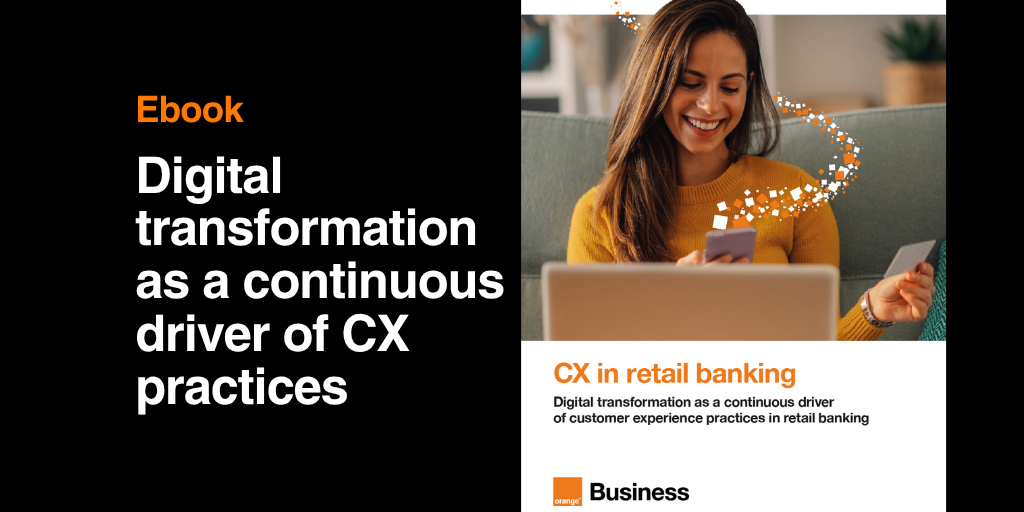In today’s retail banking environment, excellent customer experience (CX) is no longer optional—it’s a competitive necessity. A 2023 PwC survey found that 86% of customers are willing to pay more for a better banking experience, yet many banks struggle to keep up with evolving expectations. Meanwhile, fintech disruptors and digital-first businesses continue to reshape the industry, offering seamless, hyper-personalized services.
So, how can traditional banks not only meet but exceed customer expectations?
This article explores five key strategies that banks must prioritize to drive CX success, build stronger customer relationships, and future-proof their operations.
1. Align business vision with IT strategy
A customer-centric vision must be supported by the right technology. Many banks struggle to bridge the gap between business goals and IT capabilities, leading to fragmented customer experiences.
How to achieve alignment:
Agility & flexibility – Invest in AI-driven and cloud-based systems that can adapt to changing customer demands and regulatory requirements.
Shared roadmaps – Develop a unified strategy that integrates business objectives with IT initiatives.
Customer-centric planning – Ensure that every technology decision improves CX, from streamlined app interfaces to faster loan approvals.
Case study: JPMorgan Chase
JPMorgan Chase invested $12 billion in digital transformation, implementing AI-powered systems for personalized banking. The result? A 35% increase in mobile banking engagement over two years.
2. Involve stakeholders across the organization
Customer experience isn’t just an IT or marketing function—it’s a shared responsibility across the entire organization. To achieve CX excellence, banks must break down silos and foster cross-functional collaboration.
Key departments that shape CX:
- Digital Channels – Optimizing online and mobile platforms for seamless user experiences.
- Marketing & Communication – Crafting personalized messaging that resonates with customers.
- Data Science & IT – Ensuring that analytics and integration capabilities support CX goals.
- Branch Networks & Service Centers – Enhancing in-person banking with digital tools and customer insights.
Case study: DBS Bank
In 2021, DBS Bank in Singapore transformed its CX strategy by integrating real-time customer insights across all departments. The bank’s “Live Better” app feature personalizes financial planning, boosting customer satisfaction by 60%.
By involving all stakeholders, banks can create a unified and frictionless customer journey.
3. Focus on ecosystems, not just tools
Technology plays a vital role in CX, but standalone tools aren’t enough. Banks must build ecosystems that integrate people, processes, data, and technology.
Elements of a CX-driven ecosystem:
- Seamless Integrations – Connect front-end and back-end systems to provide a unified customer view.
- Data-driven insights – Use AI-powered analytics for hyper-personalized banking experiences.
- Holistic approach – Ensure that every digital and human touchpoint contributes to CX improvement.
Example: AI-powered loan approvals
Imagine a customer applying for a personal loan via a banking app. Instead of waiting days for approval, an AI-driven system instantly assesses their credit history and offers a personalized loan rate within minutes.
By integrating AI, CRM, and data analytics, banks can enhance customer satisfaction and improve conversion rates.
4. Identify early wins to build momentum
Large-scale CX transformations can be complex. Instead of overhauling everything at once, banks should focus on quick wins that demonstrate immediate value and build support for larger initiatives.
High-impact early wins:
- Personalized offers – Use AI insights to create targeted campaigns with real-time financial recommendations.
- Streamlined processes – Simplify digital onboarding, loan applications, and payment processes.
- Proactive communication – Introduce automated alerts and personalized messages to keep customers informed.
Case study: Wells Fargo
Wells Fargo introduced an AI-powered virtual assistant to help customers with financial queries. Within months, customer satisfaction increased by 20%, proving that even small changes can have a significant impact.
By focusing on achievable, high-impact improvements, banks can build credibility and set the stage for long-term CX transformation.
5. Measure, learn, and continuously improve
CX excellence is an ongoing journey, not a one-time project. To stay competitive, banks must track performance, analyze customer feedback, and refine their strategies.
Key CX metrics to track:
- Customer Satisfaction Score (CSAT) – Measures customer happiness after interactions.
- Net Promoter Score (NPS) – Gauges customer loyalty and likelihood to recommend the bank.
- Customer Effort Score (CES) – Assesses how easy or difficult it is for customers to complete tasks.
Example: data-driven CX optimization
A 2023 Forrester study found that banks that leverage customer feedback loops see a 20-25% increase in customer retention.
By consistently measuring, learning, and evolving, banks can stay ahead of industry disruptions and continuously improve CX.
The path forward to CX excellence in banking
In retail banking, exceptional customer experience is no longer optional. By aligning vision with strategy, fostering collaboration, building integrated ecosystems, achieving quick wins, and committing to continuous improvement, banks can create lasting value for their customers and their business.
CX excellence isn’t just about meeting expectations; it’s about exceeding them. By focusing on these five factors, banks can position themselves as leaders in a highly competitive industry.














Comments (0)
Your email address is only used by Business & Decision, the controller, to process your request and to send any Business & Decision communication related to your request only. Learn more about managing your data and your rights.